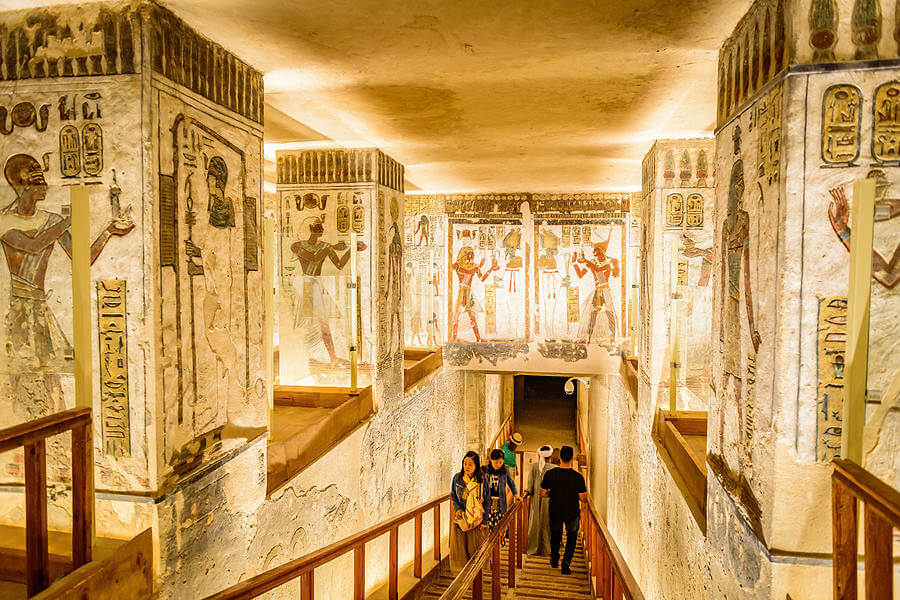Valley of the Kings- Brief Points
- The Valley of the Kings is a named given to the burial place of the kings of the New Kingdom (18th to 20th dynasties).
- The area was chosen as burial place for for the following reasons:
- The area is located in a remote place far from the eyes and it is surrounded by mountains so it was easily protected by the guardians
- From the religious concept the mountain has pyramidal tops which were associated with the sun god. This pyramid top was called “dehnet” or el-Qurna.
- The valley is wide so it would permit the movement of the funerary procession of the deceased king.
- The good quality of the limestone rocks.
- The valley is divided into two main parts represented in:
- The eastern part was called ta-set-aat or the great place.
- The western part was called ta-int or the valley. Probably the tomb of Akhenaton was started in the western part.
- There are 62 tombs and 20 unfinished pits which had been found. The tombs were given numbers from KV 1 to KV62 according to the order of their discoveries.
- The earliest 18 dynasty tombs used to make one or two right angles turn to the left like the tomb of Thutmose III.
- Starting from the tomb of Horemheb and the tomb of the 19th and the 20th dynasties became straight.
18th dynasty tombs
19th and 20th dynasties tombs
- There were many steps in making the royal tomb represented in:
- Choosing the site of the tomb under the supervision of the vizier, the architect and the chief of the workmen.
- Constructing the tomb. The workers used to remove the surface sands and debries.
- The workmen made cutting the rock into the interior of the mountain. The workmen used simple metal chisels, wooden mallets and hand axis. The workmen worked 8 hours per day for ten days then they took two day-off. The workers who performed the works of the tomb who those who lived in the village of Deir Al-Madina.
- For illuminating the interior of the mountain during works, the light of the sun used to be reflected to the inside by using mirrors. Torches were also used.
- After cutting the rocks, other workers came to smooth the walls. Then the walls were covered with pilasters to make the walls ready for the decorations [1].
- The vizier used to visit the site to instruct and investigate the works.
- The royal tombs were decorated with scenes from Books of the Afterlife which describe the journey of the sun god in the netherworld during the twelve hours of night to provide the world of the dead with light and to order giving offerings to the blessed ones.
- The Books of the Afterlife are represented in the Amduat or Imyduat that means “what is in the netherworld”, Book of Gates and Book of Caverns.






